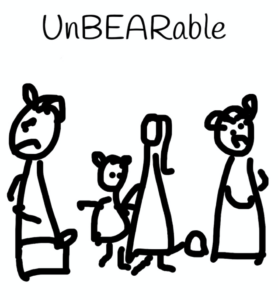The following is a report from Chris Else, a judge from last year’s writing competition. He explains why he selected the winner and what he was looking for when he judged the entries.
Judges Report: Stylefit Writing Competition Y5-6 2023
Chris Else
I was impressed with the variety in the stories I saw. The students tackled many different subjects in many different ways. While some stories were clearly based in their writers’ reading and in their experience of other media, everyone gave an individual twist to the material they were dealing with. The result was stories that ranged across genre and varied in tone from light and amusing to dark and dramatic.
What I was looking for in judging the stories, apart from the standard features of good writing — grammar, spelling and punctuation — was the following:
- Originality — I wanted to see something in the story that was new, entertaining or surprising
- Point of View — I wanted to feel that the writer had imagined themselves into the action of the story so that they could recreate the experience of the characters
- Vividness — I was looking for writing that was precise enough to evoke the world of the story and draw me into it
- Liveliness — I also gave points to writing that had energy
- Balance —- I was looking for a well-shaped story that balanced beginning and end around a strong middle
All these features I found in the winner story Stuck in a Pickle Jar in which the main character finds the tables turned on her when she tries to eat a pickle and finishes up inside the jar instead. The sudden twist from real world kitchen to the fantastic world of the jar made me laugh out loud. Life in the jar is evoked deftly and clearly and the return to the real world nicely managed.
Second place The Diary of Anne Frank was strong on empathy, clearly evoking the experience of a historical figure in a stressful situation.
The San Paulo Forest Fire took third place with its dramatic description of a forest fire out of control and the efforts of the fire firefighters trying to conquer it.The three other short-listed stories — The Door in the Tree, The Winding Willow and Field of Lillies — all showed imaginative and energetic writing. The second treated a dark subject while the other two were comic in tone.
Congratulations to the writers of these stories and well done to everyone who entered the competition.
I hope you all keep on with your writing!
I want your story to be good
By Tessa Duder
Believe me, I want your story to be good! I want it to engage me, make me laugh or feel sad – so that I happily put it in the YES pile for a second/third read and a shot at being shortlisted, and not into the SORRY pile.
First off, your story will look good: submitted before the deadline, no more than the specified word count, in a basic 12 pt font with suitable paragraphs making it easy to read. It won’t have spelling mistakes or odd punctuation. These mechanical things show you understand the rules and take pride in your work.
So, I start reading, really wanting it to be good. I’m looking for a flow of sentences that introduce me to an idea, a few believable characters, a sense of place; especially a tone that quickly gives the reader some idea of whether this is an adventure story, a family story, sci-fi or romance. The best short stories usually develop just one idea or ‘conceit’ that rings true. There’s usually a problem that gets solved. Have you done enough research to set a story in a spaceship or a 19th century castle, or a modern high school? Write about what you know or can find out.
I want to be impressed by your actual writing, the words you choose. I’m looking for variety in length of sentences, dialogue that reads well out loud, and especially, interesting verbs. English is especially rich in these ‘doing words’. (I use a Thesaurus all the time to find the verb that’s just right.) I hope you’ve read your whole story out loud to yourself, as Katherine Mansfield did, to pick up clunky repetitions.
And I hope that after your first draft you’ve become your own editor, looking for all the unnecessary words you can delete, looking for ways to improve that important opening sentence and the even more telling final sentence.
Send it off knowing it’s the best you can do.
A writer’s most terrifying problem can be …
How to Find the Right Ending
By Barbara Else
Do you have a great idea and rush into writing a story? After a page or two, do you stop with no idea what to put next?
Here’s my trick for getting through those awful moments.
I start to think about my main character. What do they want to gain by the end of the story? Why do they want it? Will you let them get it or not? Where do they live? Who is their family? What sort of friends do they have? Who might they meet? What do they like to do best? What makes them most terrified? I jot down a whole lot of stuff like this even if it seems random. It’s an ideas trap for me to choose from and push the story on to the end.
For example, in my novel The Travelling Restaurant, I wanted my hero to lose his family then find them again. It all had to happen on a sailing ship that was also a restaurant. My bunch of ideas grew to have storms, pirates, a baby sister, a sinister journalist, a whirlpool, a brave boy who didn’t think much of himself. I loved figuring out how to set all the pieces in place.
Let’s say you’re writing an action story.
One good idea gives you the opening piece: oh no, there is some kind of trouble.
The middle bunch of ideas give you chances to write action, anguish and humour for the characters: my character is doing something to get out of trouble!
The final section will be all the ideas coming your great ending: phew, the problem is solved. Or: uh-oh, my character is worse off than ever.
***
How Stick Figures help us make Stellar Stories
By Katie Pye
I hate to brag, but I’m really spectacular at something. Can you guess what it is? Here’s a clue.

Yes, you guessed it. I have a very special talent for creating ridiculous stick figure drawings! But if I am completely honest, even though I struggle to draw, my sketches have been one of my best tools for becoming a great writer. Here’s how they can help you too:
Getting started – Drawing is a great way to start a story without rushing into the writing. For example, drawing our characters helps us to get to know them better. What do they look like? What do they wear? What are their hobbies? Sometimes simply knowing your characters helps you create a story for them!
Mapping Out Your Story – Imagine you’re on an adventure and need a map to guide you. In writing, that map is your storyboard. By sketching out key scenes you can keep your plot exciting and your characters moving through their highs and lows. Don’t worry. Your storyboard doesn’t need to look glamorous. In fact, I’ve drawn ovals instead of people before. It’s just for you – a tool to make writing your story much easier.
Getting Unstuck – Stuck on a part of your story? Draw it out! Sketching a tricky scene can help us see it in a new way. Try it!
Remember, make your story your masterpiece, not your sketches. As you can tell from my Goldilocks and the Three Bears sketch above, I’ve certainly taken that to heart!
Keep writing…and sketching!
Write Many Drafts
By Bronwyn Elsmore
I’ve judged a lot of writing competitions.
I am often surprised that some entrants don’t seem to have fully considered they are competing against all others.
Competitions have rules. For The Great Kiwi Write Off there is a word limit and a deadline. So not too many rules but make sure you follow the few there are.
Otherwise, what I look for is writing that is fresh in outlook, told in a tone and style suitable to the piece.
I look at the story arc – is there an effective beginning and ending, with the content in between leading in some way to the conclusion? This can be in the form of an introduction, middle and summary if it is non-fiction.
Is the characterisation consistent?
Dialogue can help establish and elaborate on a character. But it has be realistic and not long winded. It should move the story on.
I look for work that is free from errors of grammar and fact, and anything that takes the sheen off the writing.
Your first draft is just that – a first draft. There should be many more drafts
Polish your prose. Put it aside for awhile.
Reread and polish again.
Repeat the above steps as many times as necessary till you can’t improve it any more!
Enjoy the process.
__________________
Stop me in my tracks
By Suraya Dewing
I want a story to stop me in my tracks.
I want to say, “Wow, that’s really cool, I never thought of things that way.”
I want the opening to make me curious, so curious I just have to keep reading to the end.
When a writer approaches their topic in a unique way by using an imaginative opening, I am immediately drawn in. When the writer surprises me by crafting great characters they have my full attention. I will care about the characters and want to know what happens to them.
For example, the winning story for the Year 5-6 category last year had a girl end up in a pickle jar while helping her mother. The transition from being in the kitchen to the pickle jar was totally believable. The author achieved that effect by keeping the story simple and using description well.
I almost believed it could happen.
